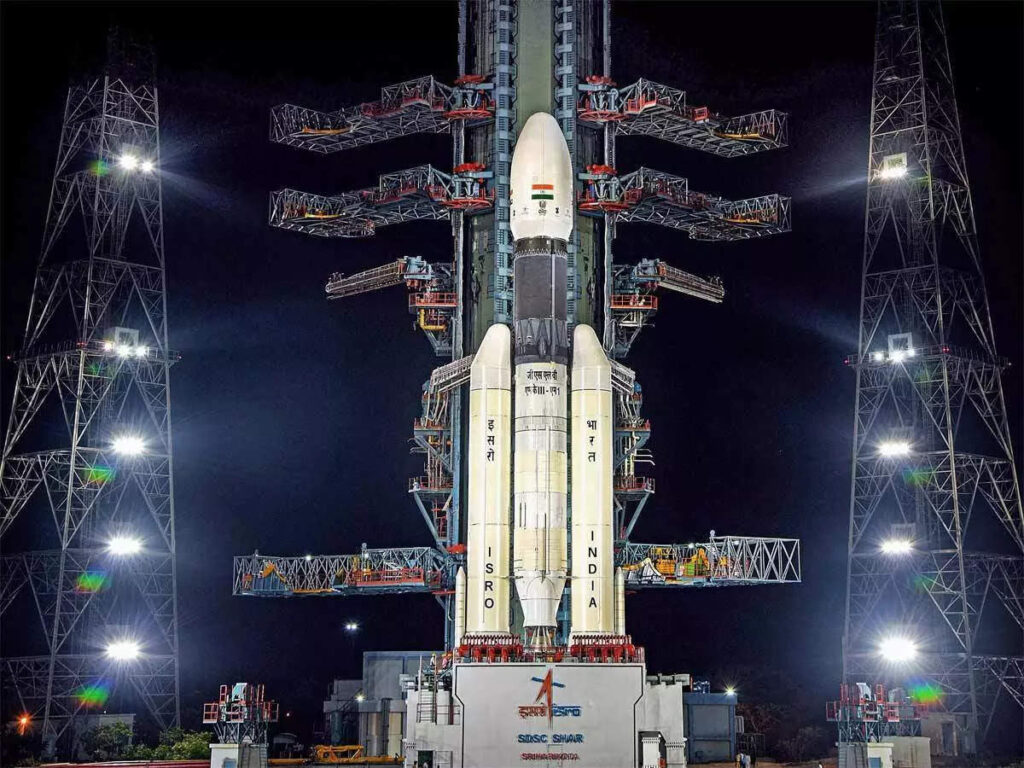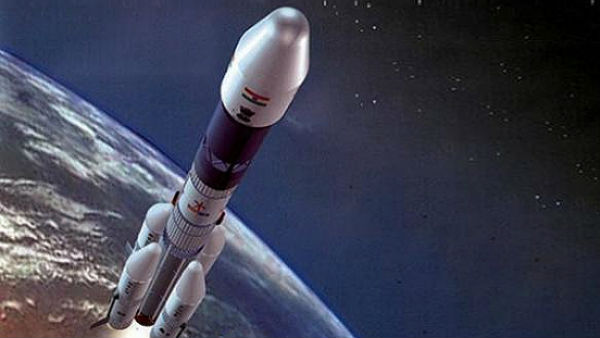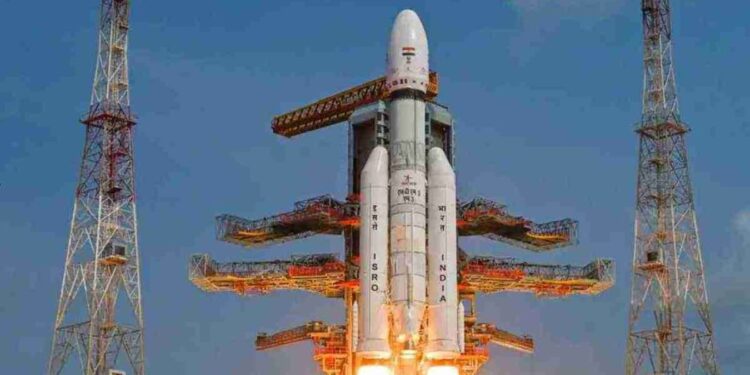Chandrayaan-3 mission to moon
In order to demonstrate end-to-end capability in safe landing and wandering on the lunar surface. Chandrayaan-3 is a follow-up mission to Chandrayaan-2.
The third lunar exploration mission, Chandrayaan-3, is being prepared by the Indian Space Research Organisation. Similar to Chandrayaan-2, it will include a lander and a rover but not an orbiter. It’s propulsion system will function like a satellite relay for communications.

Chandrayaan-3 mission by ISRO
At the Satish Dhawan Space Centre in Sriharikota on Wednesday, the Indian Space Research agency coupled the encapsulated assembly housing the Chandrayaan-3 spacecraft with LVM3. It’s new heavy lift launch vehicle.
In order to demonstrate end-to-end capability in safe landing and wandering on the lunar surface. Chandrayaan-3 is a follow-up mission to Chandrayaan-2.
”Today, at Satish Dhawan Space Centre, Sriharikota, the encapsulated assembly containing Chandrayaan-3 is mated with LVM3”. Tweeted by the Bengaluru-headquartered national space agency. ISRO has said the Chandrayaan-3 mission is slated to be launched between July 13 and July 19.
”We are aiming to launch it on July 13”, an ISRO official said. The Chandrayaan-3 mission carries scientific instruments to study the thermophysical properties of the lunar regolith, lunar seismicity, lunar surface plasma environment and elemental composition in the vicinity of the landing site. While, the scope of these scientific instruments on the lander and the rover would fit in the theme of ”Science of the Moon”.
Another experimental instrument will study the spectro-polarimetric signatures of the Earth from the lunar orbit. Which, would fit in the theme of ”Science from the Moon”, according to ISRO officials.
Release date of the mission
In a major milestone, ISRO on Wednesday said it has integrated the Chandrayaan-3 spacecraft with the launch vehicle — GSLV-Mk3 or LVM3. The space agency is looking at a mid-July launch (between July 12 and 19). Window for India’s third lunar mission and a second attempt at soft-landing equipment on Moon.
The mission is currently scheduled to launch on 13 July 2023 at 9:00 UT (2:30 p.m. India standard time), with a possibility to launch as late as 19 July. On a GSLV Mark 3 heavy lift launch vehicle from Satish Dhawan Space Center in Sriharikota, India. It will place Chandrayaan 3 into an approximately 170 x 36,500 km elliptic parking orbit. The propulsion module will bring the lander/rover will into a 100 km circular polar lunar orbit and separate.
The lander will then touch down with the rover in the south polar region of the Moon, near 69.37 S, 32.35 E. Touchdown velocity is planned to be less than 2 m/s vertical and 0.5 m/s horizontal. The propulsion module / communications relay satellite will remain in lunar orbit to enable communications with Earth.
Chandrayaan 2 will also be used as a backup relay. The lander and rover are designed to operate for one lunar daylight period (about 14 Earth days).
The Indian Space Research Organisation will launch the ambitious Chandrayaan-3 mission to the Moon on July 13. It will launched from the Satish Dhawan Space Centre in Sriharikota.
Weight of Chandrayaan-3
The total weight of the spacecraft is 3,900 kg, or 3.9 tonnes, which is a tad lower than the total carrying capacity of the LVM3 rocket. The orbiter, or propulsion module, as ISRO named it, weighs 2,148 kg, and the lander 1,752 kg, including the rover. Although, the Chandrayaan-2 payload weighed about 3.8 tonnes, with the orbiter weighing 2,379 kg and the Vikram lander weighing 1,471 kg, including the Pragyan rover’s 27 kg.
The propulsion module will take the lander and rover combination up to 100 km of the lunar orbit. While carrying the Spectro-polarimetry of Habitable Planet Earth payload to analyse the spectral and polarimetric measurements of Earth from the lunar orbit.
The main purpose of Chandrayaan-3 is to safely land the lander on the moon’s soil.
Spacecraft mated with rocket for launch

In March this year, the Chandrayaan-3 spacecraft successfully completed the essential tests that validated its capability to withstand. The harsh vibration and acoustic environment that the spacecraft would face during its launch. These tests were particularly challenging, considering the fact that the Chandrayaan-3 spacecraft, which will be launched by LVM3 (Launch Vehicle Mark-III) (earlier referred to as GSLV Mk III). It is a composite of three modules — propulsion, lander and rover.
The lander’s payloads include the Langmuir Probe, Chandra’s Surface Thermophysical Experiment. An instrument for measuring seismic activity near the landing site, and Chandra’s Surface Thermophysical Experiment, which measures thermal conductivity and temperature.
A passive Laser Retroreflector Array from US space agency National Aeronautics and Space Administration (NASA) is also accommodated for lunar laser ranging studies. The rover payloads are: ‘Alpha Particle X-ray Spectrometer’ and ‘Laser Induced Breakdown Spectroscopy’. These are for deriving the elemental composition in the vicinity of the landing site.
The lander will have the capability to soft land at a specified lunar site and deploy the rover which, will carry out in-situ chemical analysis of the lunar surface during the course of its mobility.
The lander module’s primary job is to transport it from launch vehicle injection to the final 100 km circular polar orbit of the moon and then detach it. Moreover, it was mentioned that the propulsion module carries a value-added research payload that will operate after the lander module separates.



